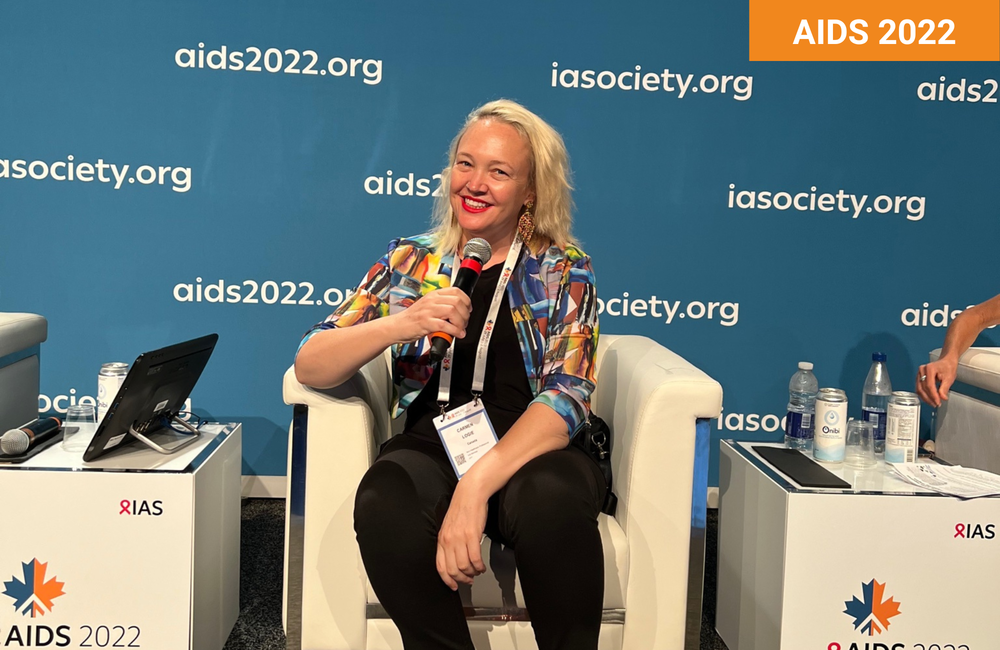
Biomedical approaches to supporting children and adolescents who are living with or at risk of acquiring HIV must be accompanied by an understanding of the social, political and economic context they are living in, a leading researcher says.
Dr Carmen Logie from the University of Toronto presented an overview of the social determinants of health and HIV in young people at the 14th International Workshop on HIV & Pediatrics, held in Montreal and virtually prior to the 24th International AIDS Conference (AIDS 2022).
She drew on findings from three of her own studies conducted with refugee and displaced adolescents in Uganda, Northern and Indigenous young people in Northern Canada, and LGBTQ young people living with HIV in Jamaica. The case studies were based on quantitative and qualitative multi-method, community-based research.
Logie highlighted five key social drivers of HIV that shape engagement with both HIV prevention and care.
- Ecosyndemics: The clustering and interactions between biological, social, psychological and ecological health challenges, which have a negative impact on health. For example, research amongst Northern and Indigenous young people explored the relationships between social and health inequalities. Lower self-efficacy to negotiate and practise safer sex was linked with intimate partner violence and food insecurity.
- Intersecting stigma: Experiences of stigma in the context of interlocking social categories and identities (such as gender, sexuality, race and class) and their links with inequitable access to power and life opportunities. For example, refugee adolescents in Uganda experience stigma relating to citizenship, legal precarity, social and gender norms, and adolescent sexuality. Logie’s study found that intersecting stigma leads to lower engagement in HIV testing.
- Concurrent resource scarcity: Structural and ecological factors contribute to community level food and water insecurity, which in turn affects mental, physical and sexual health. This is particularly important in light of challenges relating to the pandemic and climatic changes. Her research highlighted how food insecurity affected 65% of a cohort of refugee youth in Uganda during the pandemic. It was associated with increased levels of depression, lower HIV testing uptake, and engagement in transactional and survival sex.
- Cumulative and chronic violence: The impact of violence and conflict in communities, families and intimate partnerships, spanning childhood, adolescence, young adulthood and adulthood. The study on LGBT young people in Jamaica mapped verbal, physical and sexual violence that young people experienced in families, at work, in healthcare settings and from the police. Violence was associated with substance use and depression, which increases their HIV vulnerability.
- Constrained rights and agency: This is not experienced equally, varying based on citizenship, gender inequity, LGBT identities and the criminalisation of sexual orientation, gender identity and sex work. Research on Northern and Indigenous young people in the Northwest Territories of Canada examined inequities experienced in relation to gender, age, alcohol use and safer sex. This cohort experiences rates of sexually transmitted infections sevenfold above the national average.
Ways forward
Ending the presentation, Logie stated that “critical hope can support us to find hope for change in the middle of injustice.” By thinking more broadly about what defines good health, we can consider the following as social determinants of health and wellbeing for young people.
- Flourishing: living a fulfilled and happy life.
- Social and community connectedness and solidarity: being connected to yourself and those around you.
- Multilevel resiliencies: moving beyond individual resilience to the collective resilience of communities, institutions, organisations, economies and environments.
- Sexual wellbeing: moving beyond sexual health to sexual respect, sexual safety, sexual self-esteem, sexual self-determination.
- Sexual pleasure & sex positivity: increasing access to LGBT and sex work inclusive comprehensive sexuality education.
Carmen Logie’s presentation indicated that access to resources, power and survival needs are critical to advancing the success of any prevention and care interventions for children and adolescents. However, researchers don’t typically measure the social drivers described in the same way as they do individual risk factors and outcomes. She encourages us to think beyond traditional markers of good health.
Logie C. Social Determinants of Health and HIV Infection in Youth in High and Low Resource Settings. 14th International Workshop on HIV & Pediatrics, Montreal, July 2022.
